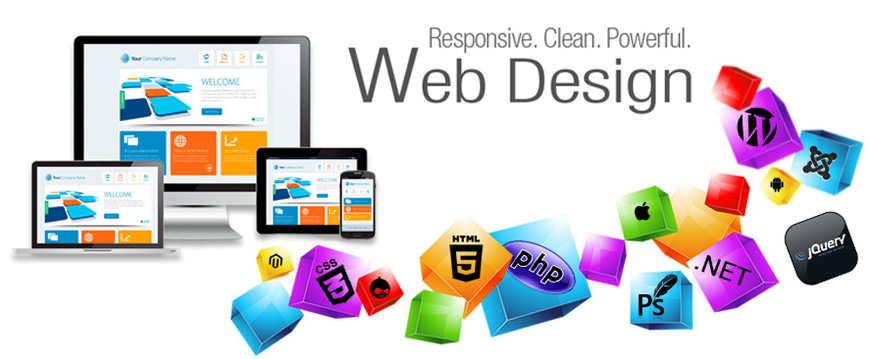The Total Guide to Finding Top Providers in Web Design Pretoria
Best Practices for Producing User-Friendly Internet Design
In the ever-evolving landscape of internet layout, establishing an easy to use interface is critical for involving audiences and driving conversions. As we explore these foundational principles, it ends up being clear that reliable customer experience style not only fulfills user expectations yet additionally establishes the phase for much deeper involvement.
Simplify Navigating
A structured navigating system is crucial for boosting customer experience on any website. Effective navigation allows users to find the details they look for quickly and easily, consequently decreasing aggravation and boosting the chance of engagement. A clear format that categorizes material realistically is extremely important; customers should intuitively recognize where to click for certain info.
Using a basic top-level navigation bar, complemented by drop-down menus for subcategories, aids in maintaining an organized structure. It is crucial to limit the variety of main navigating web links to avoid overwhelming users; commonly, five to 7 options are ideal. Furthermore, employing detailed labels improves quality, allowing users to recognize the web content of each area at a look.
Integrating a search feature even more improves the navigation experience, particularly for content-rich web sites. When looking for certain information, this attribute encourages individuals to bypass traditional navigating courses. Regular design aspects throughout all pages strengthen experience, permitting customers to browse with self-confidence.
Maximize for Mobile

First of all, take on a responsive style strategy that automatically readjusts the design and material based upon the display size. This versatility ensures that individuals have a regular experience across tools. Next, focus on touch-friendly interfaces by making certain web links and switches are conveniently clickable, minimizing the need for zooming.
Moreover, think about the value of concise content presentation. Mobile users typically look for fast info, so using strategies like collapsible food selections or accordions can boost functionality without overwhelming the customer. Additionally, guarantee that fonts are legible, and picture sizes are optimized for faster loading.
Lastly, examination your website on various mobile tools and operating systems to recognize prospective issues. By resolving these components, you will develop an intuitive mobile experience that maintains individuals involved and motivates them to explore your offerings even more - Web Design Pretoria. Focusing on mobile optimization is crucial for attaining an user-friendly website design in a significantly mobile-centric world
Enhance Loading Rate
Packing speed is an essential factor that can considerably affect individual contentment and engagement on a web site. Studies indicate that customers expect pages to fill in 2 secs or less; past this threshold, the likelihood of abandonment enhances considerably. Enhancing loading rate is essential for keeping visitors and improving general website performance.
To enhance loading speed, a number of best methods ought to be executed. Initially, enhance images by compressing them without giving up top quality, which can significantly reduce data dimensions. Additionally, utilize web browser caching to store copies of data locally, making it possible for faster load times for returning visitors. Minifying CSS, JavaScript, and HTML documents can likewise help by removing unneeded personalities and areas, thereby reducing the amount Website of code that needs to be refined.

Use Constant Style Elements
Developing a natural visual identity is important for enhancing customer experience on a web site. Constant useful source design elements, consisting of color design, typography, buttons, and layout frameworks, develop a unified appearance that helps individuals navigate easily. When individuals run into familiar patterns and designs, their cognitive load is lowered, permitting them to concentrate on web content instead than figuring out varying style elements.
Utilizing a standardized shade combination enhances brand recognition and promotes an emotional connection with individuals. Preserving consistent typography-- such as font designs, sizes, and weights-- ensures readability and contributes to a polished look. Furthermore, uniform switch styles and interactive aspects direct individuals intuitively through the website, boosting use.
Additionally, a cohesive design aids develop an organized circulation of information, making it much easier for individuals to absorb and locate web content. Each page needs to show the exact same design concepts to prevent complication and disorientation.
Prioritize Access
A cohesive aesthetic identification not only boosts navigating yet likewise sets the stage for focusing on access in web layout. Availability makes certain that all customers, consisting of those with disabilities, can communicate and navigate with a web site properly. To achieve this, web developers must comply with developed standards, such as the Internet Web Content Access Standards (WCAG)
Executing features like alt text for photos, key-board navigability, and proper color comparison can significantly enhance the individual experience for people with visual, auditory, or cognitive problems. It is essential to utilize semantic HTML to framework content practically, allowing assistive innovations to interpret and share information properly to customers.
In addition, giving multiple means of interaction-- such as text alternatives for sound and visual material-- can satisfy varied customer needs. Normal functionality screening with individuals that have specials needs can reveal potential barriers that might not be promptly obvious throughout the design phase.
Inevitably, prioritizing access not only adheres to visit this web-site legal criteria yet also broadens the possible audience, fosters inclusivity, and boosts overall website functionality (Web Design Pretoria). By installing access into the style process, designers can develop an extra fair electronic landscape for everybody
Conclusion

As we explore these foundational principles, it comes to be clear that effective customer experience layout not just satisfies customer expectations but likewise sets the phase for much deeper involvement. Mobile customers typically look for fast information, so employing strategies like collapsible food selections or accordions can enhance use without frustrating the individual. When customers come across familiar patterns and styles, their cognitive load is reduced, allowing them to concentrate on content instead than analyzing differing design facets.
In recap, carrying out finest techniques for user-friendly internet style substantially enhances the total customer experience. Sticking to these guidelines promotes a favorable connection in between customers and digital platforms, eventually promoting individual contentment and retention.